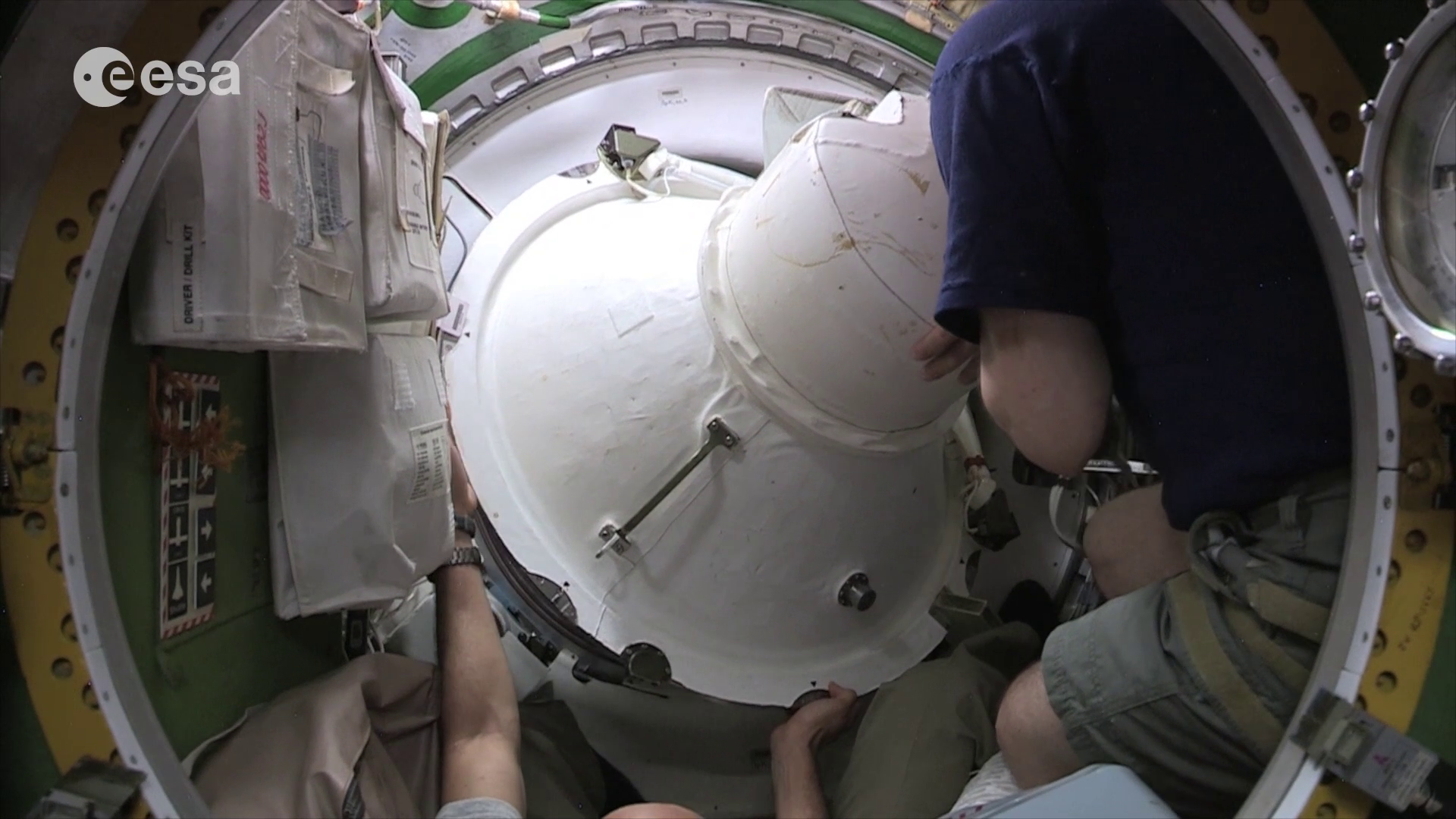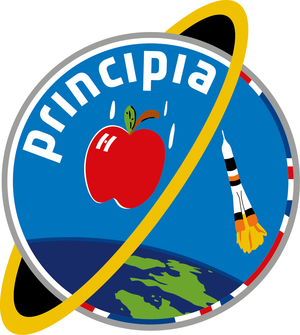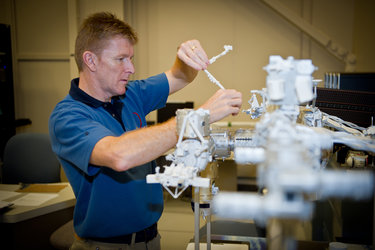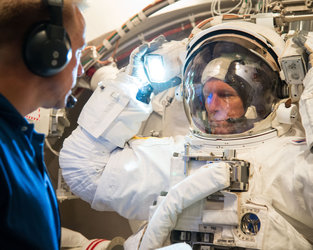Getting to space

Easing from the grasp of Earth’s gravity is no easy feat. Humans dreamed of going to the stars for centuries, but it took until 1961 for Yuri Gagarin to become the first human to orbit our planet.
When ignited, the Soyuz launcher delivers mind-boggling power to escape the clutches of Earth’s gravity and provide a cruising speed of 28 800 km/h.
Within 10 minutes of rising from the pad, ESA astronaut Tim Peake, Roscosmos commander Yuri Malenchenko and NASA astronaut Tim Kopra travelled over 1640 km and gained 210 km altitude. Every second for nine minutes, their spacecraft accelerated 50 km/h on average.
Their spacecraft shared its name with the Soyuz launcher, which means ‘union’ in Russian. The ‘TMA’ in the designation stands for Transport Modified Anthropometric, meaning that the interior was redesigned to fit larger astronauts. Regardless of the upgrade, there is little breathing room. Astronauts wear Sokol suits that offer protection in an emergency. They are designed for the Soyuz sitting position, which is why astronauts look so hunched over as they walk to their rocket.
The last ‘M’ in Soyuz TMA-19M stands for Modernised because the vehicle was upgraded with digital control systems. It is the 19th Soyuz in this series to be launched into space.

Using a different numbering system, the flight was also designated as Soyuz 46S – the 46th crewed Soyuz launch to the International Space Station.
Expedition 46 took the fast route to the Station, docking within six hours. The same-day rendezvous and docking gave them two extra full days on the Station to perform experiments. They not only spent less time cramped inside the Soyuz but, most importantly, it saved fuel and life support for their six-month Expedition.
An alternative, more traditional approach takes two days to reach the Station while orbiting Earth 34 times. This route was superseded in March 2013 when Expedition 35 was the first to get to the Space Station in record time.
The longer route is always available if orbital calculations make it necessary or as backup if ground control or the astronauts consider it safer.
Soyuz carries a module on top of the crew section to serve as living quarters enroute to the Station. Naturally, a toilet is included.


Access the video














 Germany
Germany
 Austria
Austria
 Belgium
Belgium
 Denmark
Denmark
 Spain
Spain
 Estonia
Estonia
 Finland
Finland
 France
France
 Greece
Greece
 Hungary
Hungary
 Ireland
Ireland
 Italy
Italy
 Luxembourg
Luxembourg
 Norway
Norway
 The Netherlands
The Netherlands
 Poland
Poland
 Portugal
Portugal
 Czechia
Czechia
 Romania
Romania
 United Kingdom
United Kingdom
 Slovenia
Slovenia
 Sweden
Sweden
 Switzerland
Switzerland































 Tim Peake on Facebook
Tim Peake on Facebook Tim Peake on YouTube
Tim Peake on YouTube Tim Peake on Flickr
Tim Peake on Flickr